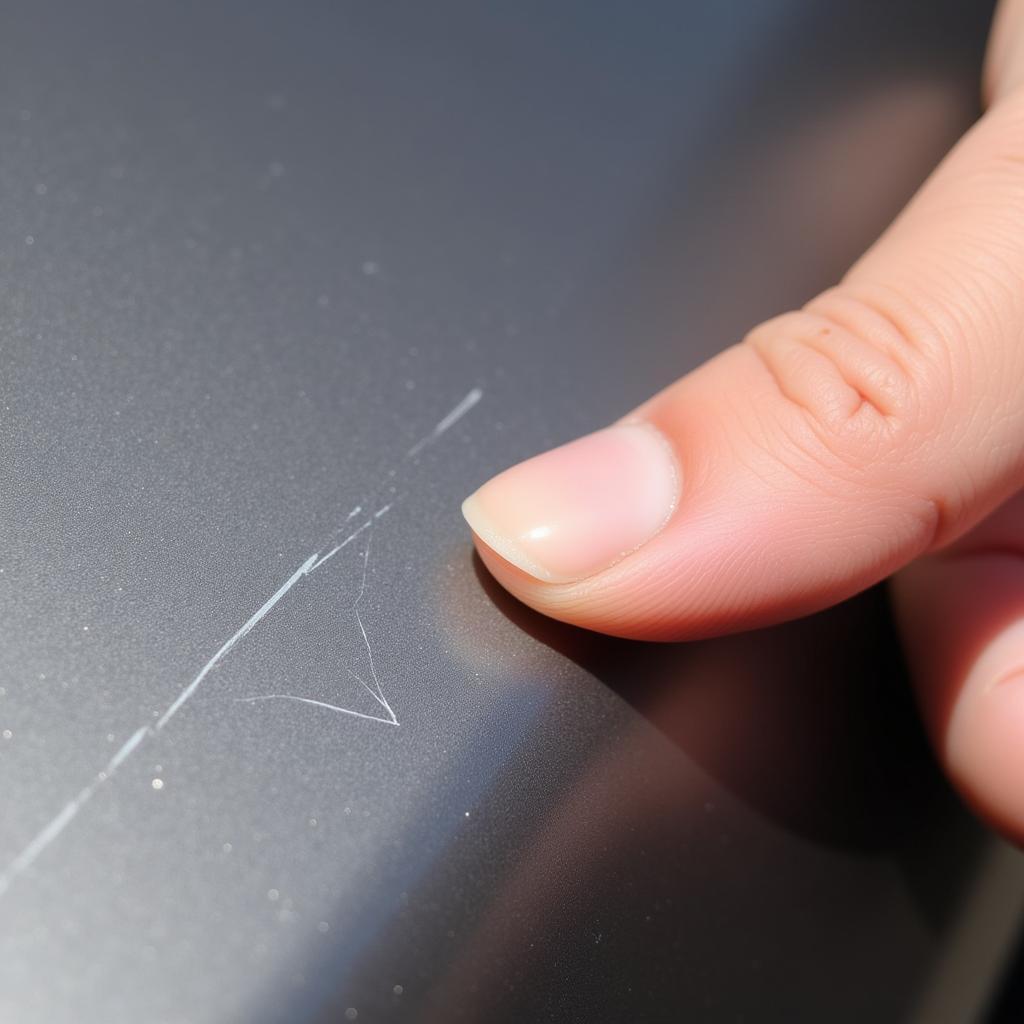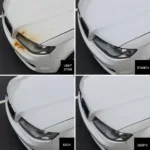Scratches on your car’s paint can be frustrating, but knowing how to repair scratch marks on car paint can save you time and money. This guide provides effective DIY solutions and professional options to restore your car’s finish, from minor clear coat scratches to deeper paint damage.
Dealing with scratches on your car’s paint can feel like a real headache. Fortunately, there are various methods to address these imperfections, depending on the severity of the damage. This guide will walk you through how to repair scratch marks on car paint, ranging from simple DIY fixes to more professional approaches. Whether it’s a light surface scratch or a deeper gouge, you’ll find the right solution here. Learning how to assess and repair these marks can save you significant money compared to a costly trip to the body shop, and also maintain your car’s value. For specific repairs on darker vehicles, take a look at our guide on black paint repair car.
Assessing the Damage: Identifying the Type of Scratch
The first step in repairing car paint scratches is determining the depth of the damage. There are generally three types:
- Clear Coat Scratches: These are the most superficial, affecting only the clear coat protecting the paint. They often appear as light, hairline scratches.
- Base Coat Scratches: These penetrate the colored paint layer and are more visible. You’ll see the underlying primer or even bare metal if the scratch is deep enough.
- Deep Scratches: These reach through the primer to the metal, requiring more extensive repair to prevent rust.
Once you’ve identified the type of scratch, you can choose the appropriate repair method. For minor paint damage, a simple DIY approach might suffice.
DIY Repair Methods for Minor Scratches
For minor clear coat scratches, you can often repair them yourself using readily available products:
- Wash and Dry: Thoroughly clean the scratched area with car wash soap and water. Dry completely with a microfiber towel.
- Rubbing Compound: Apply a small amount of rubbing compound to a clean microfiber cloth and rub it onto the scratch using circular motions.
- Polish: After the rubbing compound, use a polishing compound to further refine the surface and remove any swirl marks.
- Wax: Apply a coat of car wax to protect the repaired area and restore shine.
If you’re looking for advice on how to repair minor paint damage on car, this basic process often does the trick.
Repairing Deeper Scratches: Touch-Up Paint and Professional Repair
For deeper scratches that reach the base coat or primer, touch-up paint may be necessary. For more localized repairs in specific areas, it’s worth looking into services like car paint scratch repair sheffield.
- Clean the Area: Clean the scratched area thoroughly, as before.
- Apply Primer (if necessary): If the scratch reaches the metal, apply automotive primer to prevent rust.
- Apply Touch-Up Paint: Carefully apply thin coats of touch-up paint to the scratch, allowing each coat to dry before applying the next.
- Sand and Polish: Once the touch-up paint is dry, carefully sand and polish the area to blend it with the surrounding paint. This step requires patience and precision.
For very deep scratches or damage to a large area, professional repair is recommended. If your car has suffered more widespread damage, resources like scuffed up – car body & paint repair can provide further guidance. You can also find helpful information on overall paint scratch repair on car through our dedicated resource.
Conclusion: Keeping Your Car Looking its Best
Knowing how to repair scratch marks on car paint can help you maintain your car’s appearance and value. By understanding the different types of scratches and repair methods, you can choose the best approach for your situation, whether it’s a simple DIY fix or a professional repair. Remember to assess the damage carefully and take your time for the best results.
FAQ: Frequently Asked Questions About Car Scratch Repair
- Can I use toothpaste to remove car scratches? While toothpaste can sometimes mask minor scratches, it’s not a permanent solution and can even damage the clear coat.
- How much does professional scratch repair cost? The cost varies depending on the severity and location of the damage.
- Can I repair scratches on metallic paint? Yes, but matching the metallic flakes can be challenging, requiring careful touch-up techniques.
- What is the best way to prevent car scratches? Regular washing and waxing, parking carefully, and avoiding automatic car washes can help prevent scratches.
- How long does touch-up paint take to dry? Drying times vary depending on the product and environmental conditions, but it’s generally best to wait at least 24 hours before sanding or polishing.
- What if the scratch is on a curved surface? Applying touch-up paint to curved surfaces can be tricky. Using a fine-tipped applicator and building up thin layers can help achieve a smooth finish.
- When should I seek professional help for scratch repair? If the scratch is deep, exposes bare metal, or you’re not comfortable with DIY repairs, it’s best to consult a professional.
Need help with car repair? Contact us via WhatsApp: +1(641)206-8880 or Email: [email protected]. Our customer support team is available 24/7.



